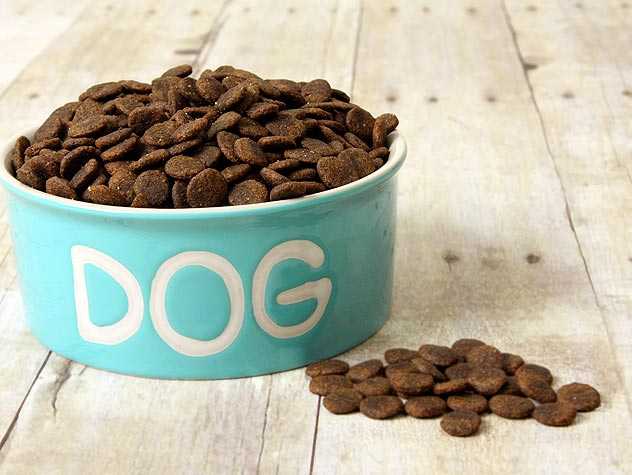Calories in Dry Dog Food

Accommodating your pooch’s daily nutritional requirements calls for much more than simply buying him the first bag of kibble you see at your local grocery store. Picking out a suitable commercial food for your pet requires a lot of considerations, whether they relate to his taste buds or caloric needs. When you choose a commercial dry food formula for your dog, make sure you’re aware of its caloric content.
Dry Food and Your Dog
Dry commercial dog food is a strong dietary staple for most canines. It provides dogs with calories, carbohydrates and fats, generally lacks a strong smell and typically stays fresh for longer than wet meals while also being affordable. When you look for a commercial dry food for your pet, select a complete and balanced product. Balanced and complete dry dog food formulas give dogs all their essential nourishment, with the exception of H20.
Calories in Dry Dog Food
Single cups of dry food typically are higher in calories than single cups of their wet counterparts, according to veterinarian and author Jocelynn Jacobs. This is largely because of dry food’s lack of water. Dry canine fare, for the most part, contains roughly 97 calories for each 1 ounce. Semi-moist dog food usually has fewer calories, at about 85 calories for each 1 ounce. Wet food is lowest in calories, usually with around 25 calories for every 1 ounce. If you’re baffled as to exactly what “semi-moist” dog food is, it’s exactly what it sounds like – somewhere between dry and wet, with a water level between 25 and 35 percent. “Normal” dry foods usually are between 10 and 12 percent water. Wet food is generally 74 to 82 percent water.
Calorie Determination
Knowing the calorie counts for every dry dog food you see at the supermarket or pet supplies store isn’t always a straightforward process. It isn’t mandatory for dog food companies to note caloric content on their packaging, except in special reduced calorie formulas, according to veterinarian and author Ernie Ward. You usually can figure out the calories on your own, by looking at the values under the package’s Guaranteed Analysis section. Fat usually contains roughly 8.5 calories for each single gram. Carbohydrates and proteins are about 3.5 calories for each single gram. Multiply the indicated fat percentage by 8.5. Then follow by multiplying the indicated carbohydrate and protein percentages by 3.5. Add the numbers and that final sum should be close to the number of calories in each single gram of the dry food. Some dog food brands do provide caloric content on individual packaging and on official product websites, or will provide that information if you call or write.
Caloric Demands Throughout the Canine World
Dogs run the gamut in caloric demands. A 1-year-old Chihuahua, for example, is not going to need the same daily calories as an older German Shepherd Dog. Other factors also go into figuring out how many calories your dog needs each day. If your dog is a little chubby and needs to lose 5 pounds, he requires fewer calories than other pooches of his age group. If your dog is nursing a litter of pups, she might need to increase her daily calories. Spayed or neutered dogs also have different caloric needs than their intact pals. Discuss with your veterinarian exactly how many calories your pet should be eating on a daily basis. Make sure your vet knows all the details she needs to help your dog, from information about your pet’s daily exercise levels to his full health background.